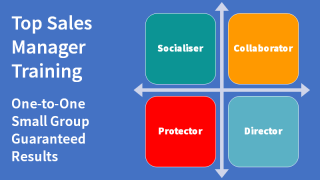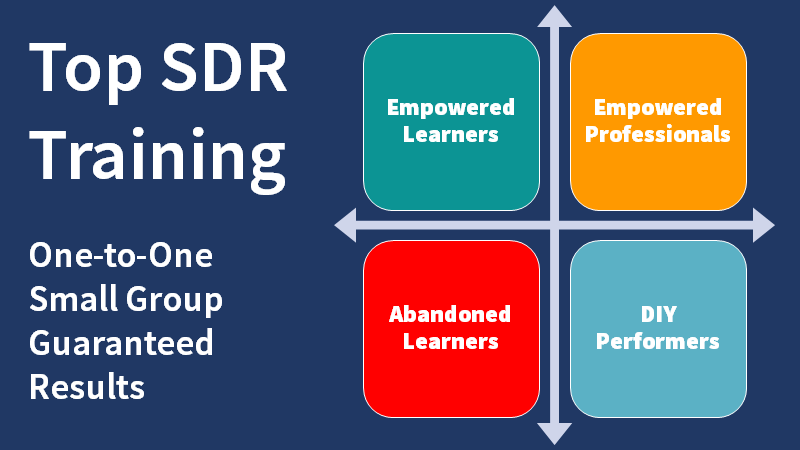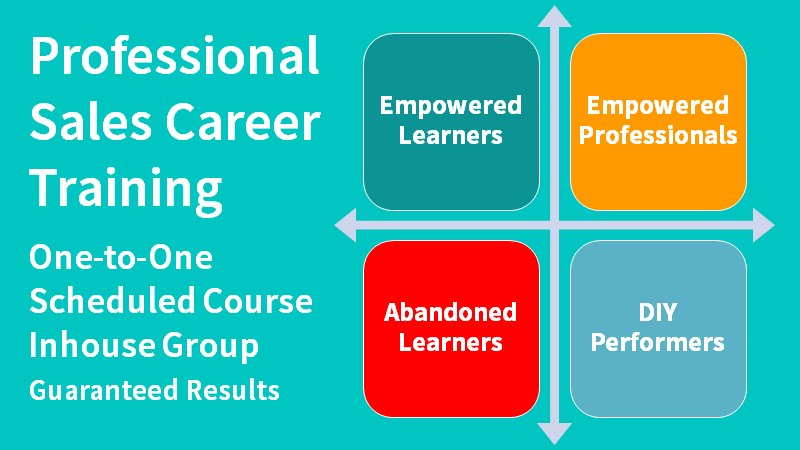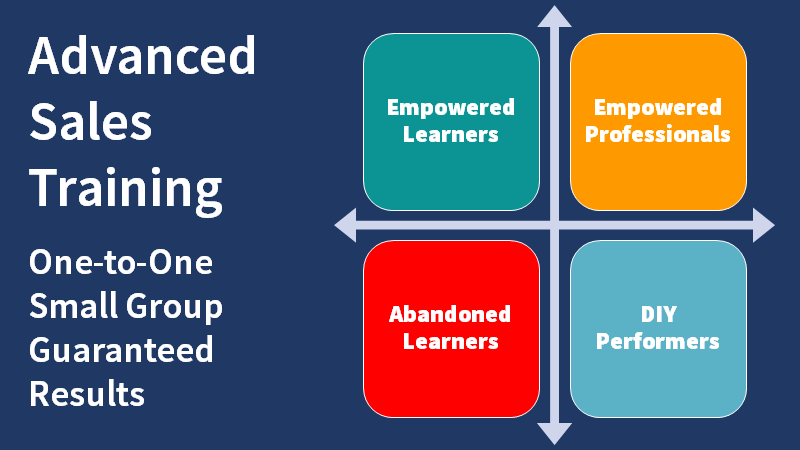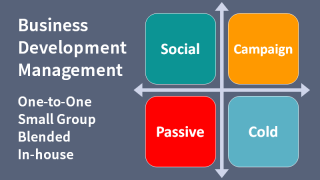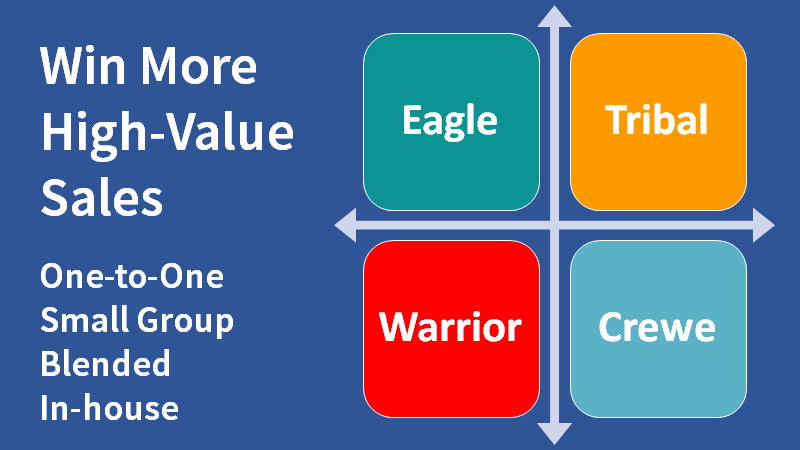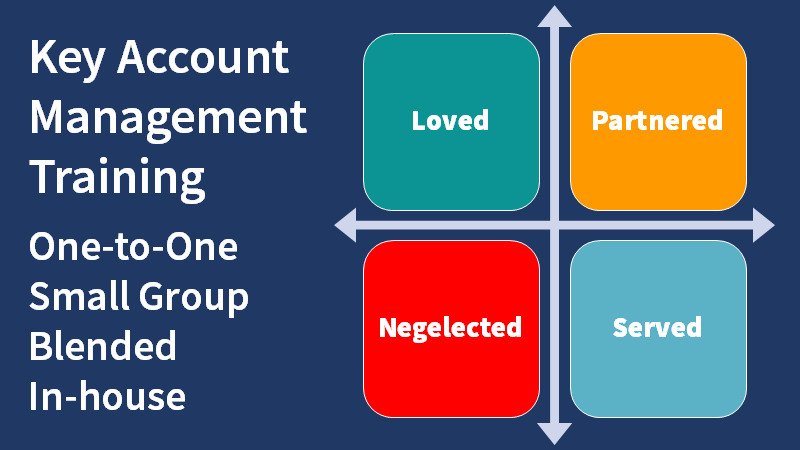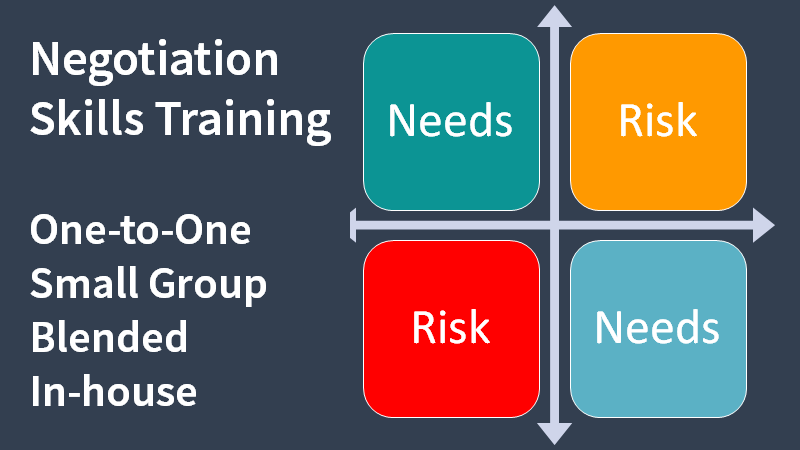On-the-job actions for sales prospecting skills development.
This page presents workplace actions that aid sales prospecting skills development and forms part of a set of guides that are aligned with our Sales Skills Assessment.
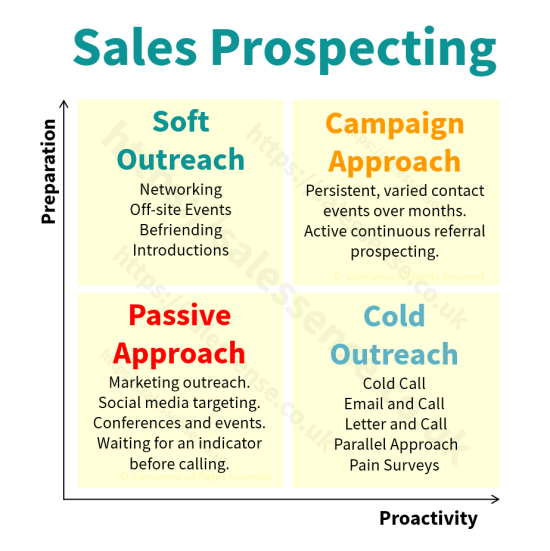
- Finding enough sales leads and opportunities to achieve a set sales target.
- Initiating an authentic sales conversation with new contacts.
- Leveraging professional contacts for introductions to key people.
Improve sales prospecting skills with the following actions:
Calculate how many orders are necessary to reach your target.
Divide your target by the average sale value in your territory, region, or country. Then multiply the result by the inverse of your average prospect-to-sale conversion rate. This will tell you how many prospects you need, on average, to achieve your target. In the same manner, work out how many potential customers you need to approach to find enough prospects.
Create a sales prospect profile that characterises your or your best customers or otherwise create models of the ideal types of prospects you are looking for.
The details noted in an ideal sales prospect profile should include everything that can be learned about potential prospects without calling them. The more complete the profile template, the easier it will be to recognise other organisations who are like them based on published public information. Similar organisations are likely to be facing similar challenges, problems, and issues. Their similarity with established high-value customers makes them likely sales prospects. Profiles should include criteria that are easy to research:
- The aims of the organisation.
- The markets and customers they sell to.
- The type of business and the value they create for their customers.
- Size in terms of employees and revenue.
- Their key success factors - the things they must do well to succeed.
- Their competitors and market share.
- Their fiscal or budget trends.
- Their strengths and weaknesses, opportunities and threats.
Set aside regular sales prospecting time based the number of prospects you need to achieve your sales target.
Make using this time for prospecting your top priority and don't let anything distract you or prevent you from using the time to find new sales prospects.
These articles offer further ideas:
- Twenty-Seven Ways to Find Sales Leads Without Cold Calling
- Lead Generation for the Complex Sale - Book Review
- Cold Calling Excuses Measured
Increase the number of authentic sales prospecting conversations that you have with the following actions:
Learn by heart good answers to the top six customer questions.
In particular, learn your success stories, your differentiation, the hard numerical proof that what you sell delivers what you claim, and proof that your organisation fulfils its promises. Knowing these things increases confidence and prospect engagement success rates.
Research the best approach methods for your sales environment - those with the highest actual success rates and then learn how to use them.
The following seven methods can all be effective with the right preparation, timing, and execution:
- Cold Calling
- Letter and Follow Up
- The Parallel Approach
- The Rifle Shot Approach
- The Off-Site Event
- The Social Approach
- The Campaign Approach
Use ideal prospect profiles (see action 2.) to prepare a list of highly likely prospect candidates.
Then do your homework on each prospect to be sure they qualify, to find the right people, and identify their real issues.
Design your own repeatable and proven approach method.
Create a sales prospecting process so that you can follow it rigorously, accurately measure it's effectiveness, and continually improve it.
These articles offer further ideas for sales prospecting skills development:
Develop sales prospecting skills through social networking with these actions:
Set aside some time to develop and improve your online persona, through your online profiles such as LinkedIn, Facebook, Twitter, and any other online presence that is appropriate for your market.
Start or update a blog or website to share your expertise, knowledge, and experience regarding the solutions that you sell and the market that you sell into. Link what you publish via your professional social media accounts. Showcase your expertise and ability through sharing rather than overt declarations. Aim to reveal your ability to help the customers that you seek, to succeed.
Develop your professional network.
Set aside an hour a week to connect with the people you know amongst past and current colleagues, business partners, customers, and appropriate friends.
Keep adding to your network while reaching out with helpful, valuable, relevant, and interesting messages. The best tool for this by far is LinkedIn.
With a high-quality network of 300 or more professionals, you will find it increasingly easy to learn about and connect with the sales prospects you want to reach.
Look for people in your network who can introduce you to people on your qualified prospect list.
Be ready to explain why it will be in the prospect's interest for your contact to make the introduction.
Work out what you will say in advance so that you can convey the compelling business benefits to your intermediary in a succinct and convincing manner.
Make a list of the people in your network who are knowledgeable about your market then arrange to seek their advice on who can benefit most from the business value that your products or services represent.
People love to be asked for advice. Be ready to listen attentively. Encourage them to keep talking. If you listen well enough some people will offer to arrange introductions.
These pages offer further resources and ideas:
- Introductions via People You Don't Know
- Referrals With and Without Asking
- LinkedIn for Sales Professionals
- Sales Leads While You Sleep
Get the entire collection of over 100 hyperlinked on-the-job sales skills development actions together with our sales skills assessment in a neat indexed PDF document.
If you need a sales prospecting skills development plan or want to start a performance improvement programme, get in touch. Telephone +44 (0)1392 851500. We will be pleased to discuss your needs or talk through some options. Alternatively, send an email to custserv@salessense.co.uk for a prompt reply or use the contact form here.



